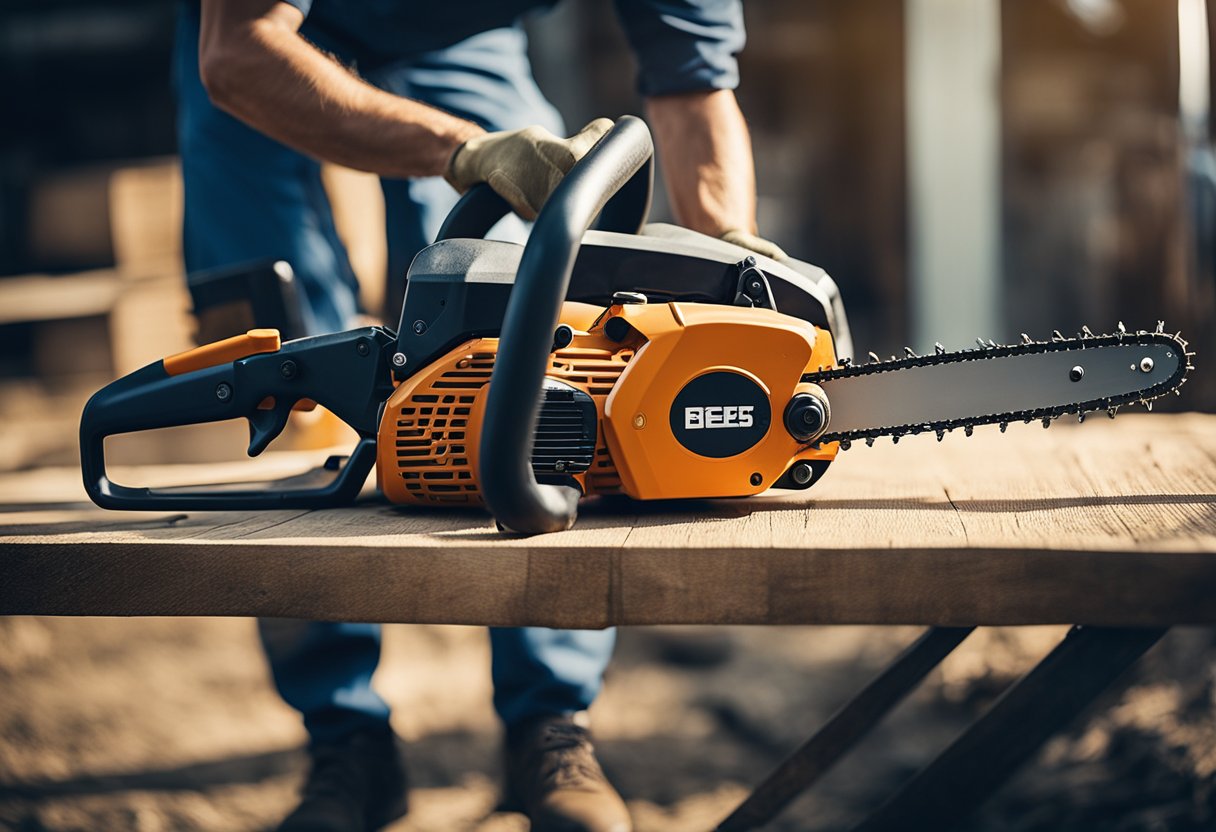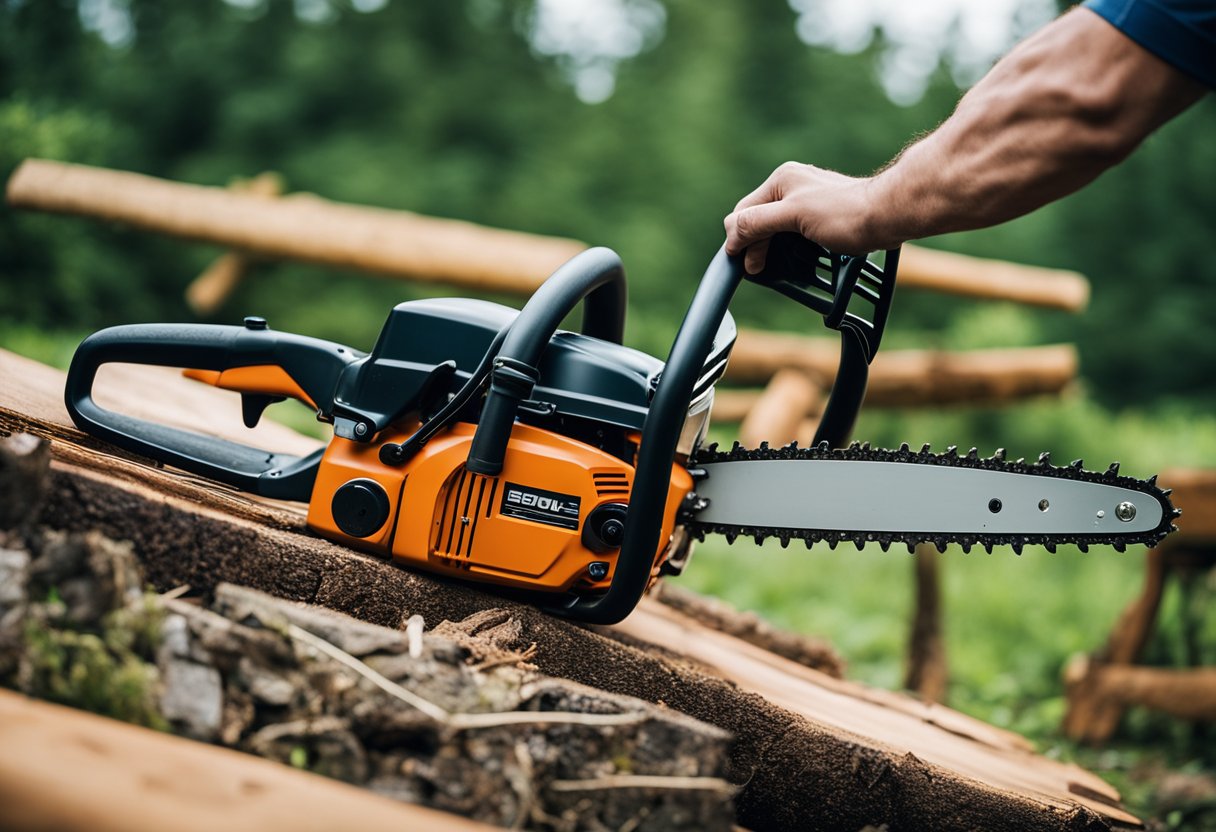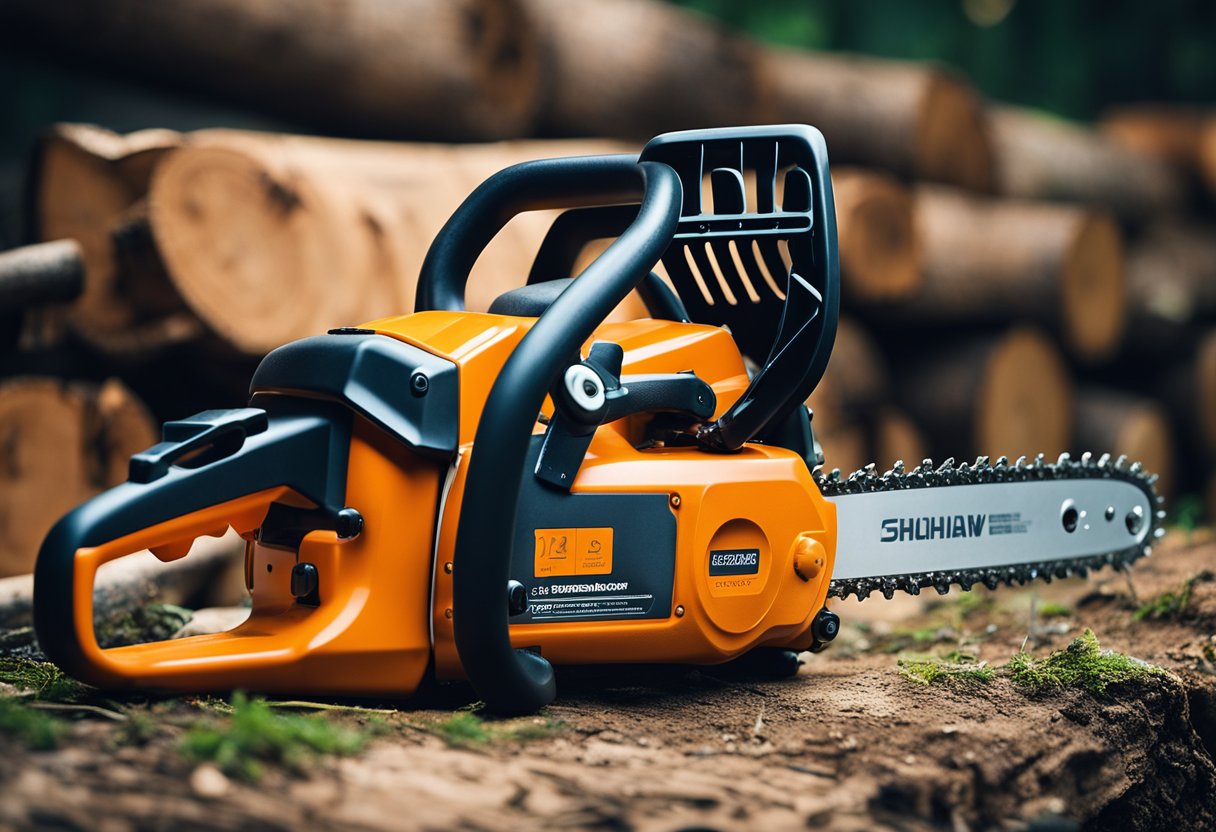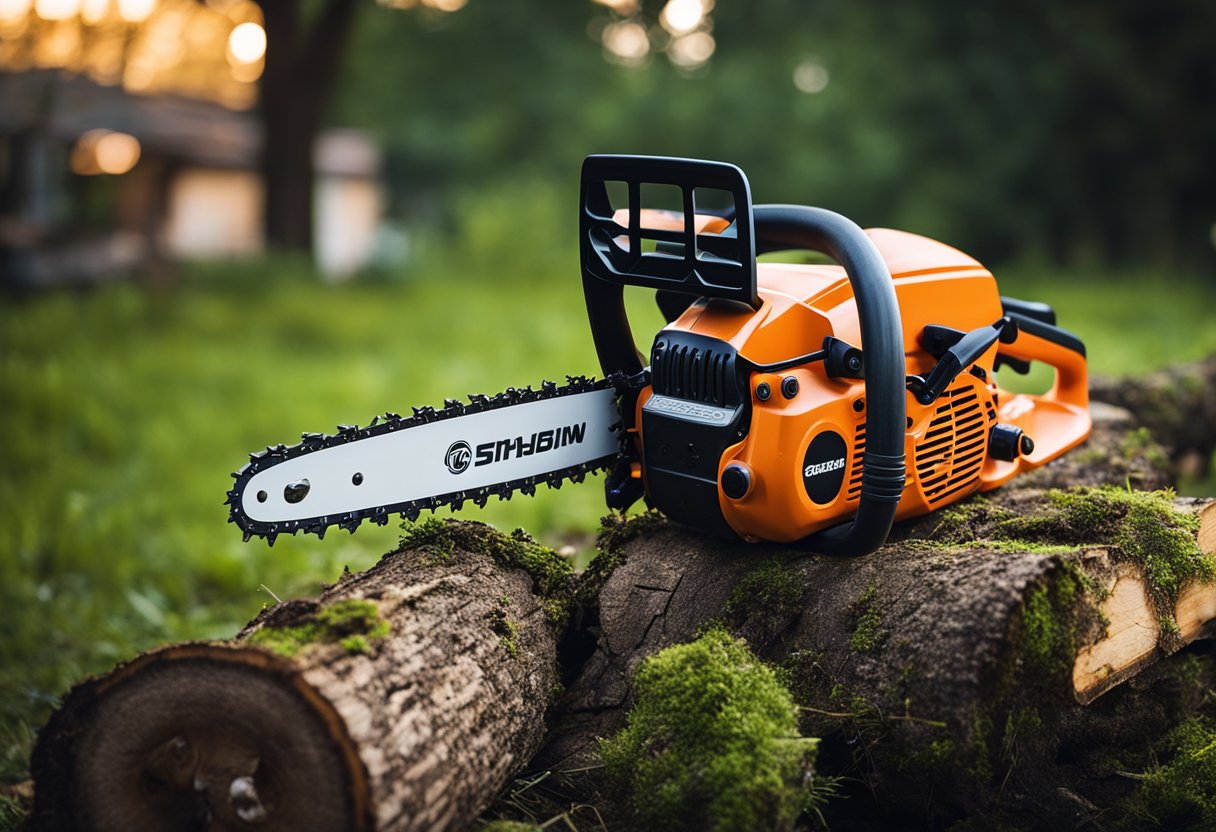I have been asked many times whether it is possible to put a longer bar on a chainsaw. The answer is yes, but it depends on various factors. In this article, I will provide you with all the information you need to know about putting a longer bar on your chainsaw.
Understanding the basics of a chainsaw is essential before delving into the topic of adding a longer bar. Chainsaws are powerful tools that are used for cutting wood, pruning trees, and other outdoor activities. The bar length of a chainsaw determines the size of the wood that can be cut. However, adding a longer bar to your chainsaw can have both advantages and disadvantages.
Key Takeaways
- Adding a longer bar to a chainsaw is possible but depends on various factors.
- Understanding the basics of a chainsaw is essential before adding a longer bar.
- Compatibility, installation, safety, maintenance, and brand-specific guidelines are important factors to consider when adding a longer bar to your chainsaw.
Understanding Chainsaw Basics
https://www.youtube.com/watch?v=OrRux_GSQQQ&embed=true
As someone who has worked with chainsaws for over 20 years, I understand that chainsaws are powerful tools that require proper handling and maintenance. Before we dive into the question of whether you can put a longer bar on a chainsaw, let’s first discuss some basic components of a chainsaw.
Chainsaw Components
A chainsaw consists of several components, including the engine, chain, and chainsaw bar. The engine is the power source of the chainsaw and is typically measured in volts, amps, or displacement. The chain is the cutting component of the chainsaw, and the chainsaw bar is the guide that holds the chain in place.
Chainsaw Bar Length
The chainsaw bar length is an essential factor to consider when choosing a chainsaw. The bar length determines the size of the material that the chainsaw can cut. Longer bars typically range from 16 to 24 inches and provide greater reach and better leverage when trimming large branches and trees.
Engine Size and Power
The engine size and power of a chainsaw are crucial factors that determine the length of the chainsaw bar. The more powerful the engine, the longer the bar it can handle. However, it’s important to note that as you increase the length of your chainsaw bar, the cutting performance will decrease. So, it’s essential to find the right balance between bar length and engine power.
Sprocket
The sprocket is another important component to consider when putting a longer bar on your chainsaw. The sprocket must be compatible with the chain and the new bar length. If you’re using a particular length bar, your chainsaw must have enough power to handle it.
In summary, understanding the basic components of a chainsaw, such as the engine, chain, chainsaw bar, and sprocket, is essential when considering whether to put a longer bar on your chainsaw. It’s crucial to find the right balance between bar length and engine power to ensure optimal cutting performance.
Choosing the Right Bar Length
https://www.youtube.com/watch?v=eqgY1ohless&embed=true
When it comes to choosing the right bar length for your chainsaw, there are a few things to keep in mind. First and foremost, you need to check your manufacturer’s manual or user manual to see what bar sizes are compatible with your chainsaw. This is important because using a bar that is not compatible with your chainsaw can lead to a number of problems, including reduced performance and even damage to your chainsaw.
Once you know what bar sizes are compatible with your chainsaw, you need to consider what length will give you optimal performance. A longer bar allows you to reach further and cut through larger logs, but it also adds weight to your chainsaw and can make it more difficult to handle. On the other hand, a shorter bar is lighter and easier to handle, but it may not have the cutting capacity you need for larger jobs.
To help you determine what bar length is right for your chainsaw, you can refer to a CC chart. This chart shows the recommended bar length based on your chainsaw’s engine power rating. Keep in mind, however, that this is just a general guideline, and you should always refer to your manufacturer’s manual or user manual for specific recommendations.
In general, if you have a chainsaw with a higher engine power rating, you can use a longer bar without sacrificing performance. However, if your chainsaw has a lower engine power rating, you may want to stick with a shorter bar to ensure optimal performance.
In summary, choosing the right bar length for your chainsaw is crucial for both performance and safety. Make sure to check your manufacturer’s manual or user manual for bar compatibility and refer to a CC chart for general guidelines. Keep in mind your chainsaw’s engine power rating and your own needs for reach and cutting capacity when making your final decision.
Compatibility of Chainsaw and Bar
https://www.youtube.com/watch?v=WtjWiKo6coo&embed=true
As a chainsaw user, you might be wondering whether you can put a longer bar on your chainsaw. The answer is yes, but with some caveats. You need to ensure that the chainsaw and bar are compatible with each other.
The compatibility of a chainsaw and bar depends on several factors, such as the chainsaw model, manufacturer’s manual, engine size, and power. Before purchasing a new bar, you should check the manufacturer’s manual to see the recommended bar length for your chainsaw model. You can also use the “ctrl + f” function to search for the recommended bar length in the manual.
The engine size and power of your chainsaw also play a crucial role in determining the compatible bar length. A longer bar requires more power to cut through wood efficiently. If your chainsaw is underpowered, putting a longer bar on it will result in reduced cutting performance. Therefore, it is essential to check the power-to-bar compatibility chart to ensure that your chainsaw can handle the longer bar.
It is also worth noting that a longer bar can cause safety issues if not compatible with your chainsaw. The longer the bar, the more difficult it is to control the chainsaw, especially for inexperienced users. Therefore, it is crucial to ensure that the bar length is compatible with your chainsaw and your skill level.
In summary, you can put a longer bar on your chainsaw, but you need to ensure that it is compatible with your chainsaw model, engine size, and power. Checking the manufacturer’s manual, power-to-bar compatibility chart, and your skill level is essential to ensure the safety and efficiency of your chainsaw.
Installation of a Longer Bar
https://www.youtube.com/watch?v=UFiRY_Yli98&embed=true
Installing a longer bar on a chainsaw can be done with a few simple steps. However, before starting the installation process, it is important to check the compatibility of the chainsaw with the new bar. The following entities should be checked for compatibility: the size of the engine, the size of the chain, the size of the bar, and the sprocket. These requirements can be checked in the following sequences:
- Compatibility of the engine with bar length.
- Compatibility of chain with the new bar.
- Compatibility of the sprocket with the chain.
Once compatibility is confirmed, the following steps can be taken to install the longer bar:
-
Remove the old bar and chain – Using the appropriate tools, remove the old bar and chain from the chainsaw. Make sure to follow the instructions provided in the user manual for your chainsaw.
-
Install the new bar – Place the new bar onto the chainsaw and make sure it is properly aligned. Tighten the bolts and nuts to secure the bar in place. Make sure not to overtighten as this can cause damage to the chainsaw.
-
Install the new chain – Install the new chain onto the chainsaw, following the instructions provided in the user manual. Make sure the chain is properly tensioned and aligned with the bar.
-
Install the new sprocket – If the new bar requires a new sprocket, install it following the instructions provided in the user manual.
-
Test the chainsaw – Before using the chainsaw, make sure to test it to ensure everything is working properly. Make sure to follow the safety guidelines provided in the user manual.
In conclusion, installing a longer bar on a chainsaw can be done with a few simple steps. However, it is important to check the compatibility of the chainsaw with the new bar before starting the installation process. Following the instructions provided in the user manual for your chainsaw is important to ensure proper installation and safe use.
Safety Precautions
https://www.youtube.com/watch?v=H9BegDz1Beo&embed=true
When using a chainsaw with a longer bar, it is crucial to take safety precautions to avoid kickback and other accidents. Here are some safety tips to keep in mind:
1. Wear Protective Gear
Before operating a chainsaw, always wear protective gear such as gloves, eye protection, and hearing protection. This will help protect you from flying debris and loud noises.
2. Follow Manufacturer Recommendations
Always follow the manufacturer’s recommendations for bar length and chain size. Using a longer bar than recommended can increase the risk of accidents and damage to the chainsaw.
3. Practice Safe Operation
When using a chainsaw with a longer bar, it is important to practice safe operation. Keep both hands on the chainsaw at all times, and make sure the chain is properly tensioned and lubricated.
4. Watch Out for Kickback
Kickback is a common hazard when using a chainsaw with a longer bar. To avoid kickback, keep the chainsaw at a safe distance from your body and never cut with the tip of the bar.
5. Take Breaks
Using a chainsaw with a longer bar can be physically demanding. Take frequent breaks to rest and avoid fatigue, which can increase the risk of accidents.
By following these safety precautions, you can safely operate a chainsaw with a longer bar and avoid accidents.
Maintenance and Care
As a chainsaw enthusiast, I know how important it is to maintain and care for your chainsaw properly. One of the most important aspects of chainsaw maintenance is ensuring that the bar and chain are in good condition. In this section, I will outline some tips for maintaining and caring for your chainsaw bar.
First and foremost, it is essential to keep your chainsaw bar clean. Dirt, debris, and sawdust can accumulate on the bar and cause it to wear down faster. To clean your bar, use a soft-bristled brush to remove any debris, then wipe it down with a clean cloth. If your bar is particularly dirty, you can use a mild soap and water solution to clean it.
Another important aspect of chainsaw bar maintenance is keeping it balanced. A balanced bar helps to reduce vibration, which can cause fatigue and discomfort in your hands and arms. To check the balance of your bar, place it on a flat surface and see if it rocks back and forth. If it does, you may need to have it professionally balanced.
Sharpening your chainsaw chain regularly is also crucial for maintaining your bar. A dull chain can cause the bar to wear down faster and can also be dangerous to use. Make sure to sharpen your chain according to the manufacturer’s instructions.
Finally, lubricating your chainsaw bar is essential for ensuring its longevity. A well-lubricated bar helps to reduce friction and wear and tear. Make sure to use a high-quality bar and chain oil and follow the manufacturer’s instructions for lubrication.
In summary, maintaining and caring for your chainsaw bar is essential for ensuring its longevity and performance. Keep your bar clean, balanced, sharp, and well-lubricated, and your chainsaw will provide you with years of reliable service.
Brand Specific Guidelines
When it comes to replacing or upgrading the guide bar on your chainsaw, it’s important to consider the brand-specific guidelines. Different brands may have different recommendations when it comes to the maximum bar length that can be used with their chainsaws.
For example, Stihl recommends that you use a guide bar no longer than 20 inches with their chainsaws. Using a longer bar may result in reduced cutting performance and increased wear and tear on the chainsaw. Similarly, Husqvarna recommends that you use a guide bar no longer than 24 inches with their chainsaws.
It’s also important to consider the pitch and gauge of the original chain when selecting a new guide bar. Using a guide bar with a different pitch or gauge than the original chain may result in poor cutting performance or even damage to the chainsaw.
When selecting a new guide bar, it’s important to choose one that is compatible with your specific chainsaw model. Using a guide bar that is not designed for your chainsaw may result in poor cutting performance or even damage to the chainsaw.
In summary, when considering whether you can put a longer bar on your chainsaw, it’s important to consult the brand-specific guidelines for your chainsaw model. Additionally, it’s important to consider the pitch and gauge of the original chain and to choose a guide bar that is compatible with your specific chainsaw model.
Conclusion
In conclusion, putting a longer bar on a chainsaw can be a great option for those who are looking to increase their cutting capacity. However, it is important to keep in mind that longer bars can also decrease the cutting performance of your chainsaw. As I have learned through my own experience, the length of the bar you can use depends on how powerful your chainsaw is. The more power it has, the longer the bar it can handle.
When considering whether to put a longer bar on your chainsaw, it is important to take into account your own personal preference. Some people prefer a longer bar for home improvement projects, while others may prefer a shorter bar for more precise cuts. Arborists may also have different needs when it comes to bar length, depending on the type of trees they are working with.
Overall, the decision to put a longer bar on your chainsaw should be made carefully and with consideration to your own needs and experience. By doing your research and taking the time to choose the right bar length for your chainsaw, you can improve your cutting performance and achieve better results in your projects.
Frequently Asked Questions
Can you put a 18 inch bar on a 16 inch chainsaw?
It is not recommended to put a longer bar on a chainsaw than what the manufacturer recommends. Using a longer bar than what is recommended can cause the chainsaw to overheat, damage the engine, and potentially cause injury.
Can I put a 16-inch bar on a 14 inch chainsaw?
It is generally not recommended to put a longer bar on a chainsaw than what the manufacturer recommends. Using a longer bar than what is recommended can cause the chainsaw to overheat, damage the engine, and potentially cause injury.
Can you put a 20 inch bar on a 18 inch Poulan Pro chainsaw?
It is not recommended to put a longer bar on a chainsaw than what the manufacturer recommends. Using a longer bar than what is recommended can cause the chainsaw to overheat, damage the engine, and potentially cause injury.
Can I put a bigger bar on my Echo chainsaw?
It is not recommended to put a longer bar on a chainsaw than what the manufacturer recommends. Using a longer bar than what is recommended can cause the chainsaw to overheat, damage the engine, and potentially cause injury.
Can you put a longer bar on a Poulan chainsaw?
It is not recommended to put a longer bar on a chainsaw than what the manufacturer recommends. Using a longer bar than what is recommended can cause the chainsaw to overheat, damage the engine, and potentially cause injury.
What are the benefits of a longer chainsaw bar?
A longer chainsaw bar can allow you to cut larger trees and branches with ease. It can also increase the efficiency and speed of your work, as you can make fewer cuts to complete a job. However, it is important to use a bar length that is appropriate for your chainsaw’s engine power and capabilities to ensure safe and efficient operation.

Hi, I’m Sal Muller of Tooltrip.com. My DIY experience led me to understand essential power tools for home projects. Tooltrip.com guides enthusiasts and professionals in choosing right tools for any job. I provide concise top tool reviews for easier, efficient DIY.






